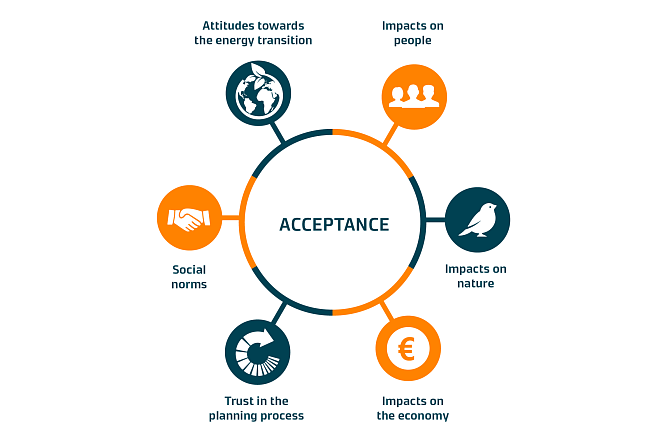Policy Brief: six ways to strengthen the acceptance of wind power
The European Commission is working to speed up the permitting process for renewable energy projects. However, the rapid deployment of wind power can raise concerns and opposition within local communities. An international working group led by the Natural Resources Institute of Finland (Luke) and representing seven countries has come up with six recommendations to help improve the acceptance of wind power.

Different countries are at different stages of wind energy development and implementation. Developed through international cooperation, the policy brief provides an opportunity to share knowledge and experience on best practices in wind energy that contribute to a sustainable and socially acceptable transition to clean energy.
1. Consider welfare impacts
The concerns of local communities should be considered and addressed in an open and transparent way, using scientific knowledge. Although research shows no evidence of direct effects of wind power on human health, low-frequency noise and flickering lights can cause irritation and stress and reduce quality of life. It is important to prevent and minimise these.
2. Assess the overall environmental impact
"The cumulative impacts of different wind power projects should be assessed as a whole to minimise the fragmentation of habitats," says Professor Anne Tolvanen of Luke, who led the policy brief. There are many adjacent projects, and Finland lacks a body to assess their combined impacts.
"Operators should also apply a mitigation hierarchy, i.e. avoid siting wind power in high-value areas, minimise collision damage and compensate for habitat loss," Tolvanen continues.
3. Identify and highlight the economic impacts
"The economic benefits and costs of wind power in terms of, for example, the economy, employment, landowners and local government finances should be clearly articulated to ensure transparent and fair decision-making," emphasises Professor Eija Pouta from Luke.
4. Involve local communities from the beginning
"Instead of mere consultation, we need an interactive process to ensure that the voices of different stakeholders are adequately heard in decisions that affect them," says Professor Lasse Peltonen from the University of Eastern Finland.
5. Take everyone's views into account
The voice of the silent majority is not always heard, and loud actors gain a foothold. Priority should be given to those most affected by the wind power project.
6. Highlight the overall benefits
While the energy transition itself may not be important to local residents, the benefits it brings, such as new investments, economic opportunities, a positive image of the area and long-term environmental improvements, can make a wind energy project more attractive.
Recommendation stresses the importance of using research evidence to inform decisions
The research behind the policy brief defines acceptance as positive or neutral attitudes towards wind energy. The policy brief emphasises the importance of using research evidence in decision-making and the need for further research, for example to assess long-term impacts on people and nature, to model economic benefits and costs, and to develop planning processes.
"Our six recommendations are also applicable to other large-scale infrastructure, such as the design and construction of mining sites and solar power plants," says Tolvanen.

Read more about the recommendations
The policy brief was developed as part of the LandUseZero project funded by the Catch the Carbon Research and Innovation Programme.






